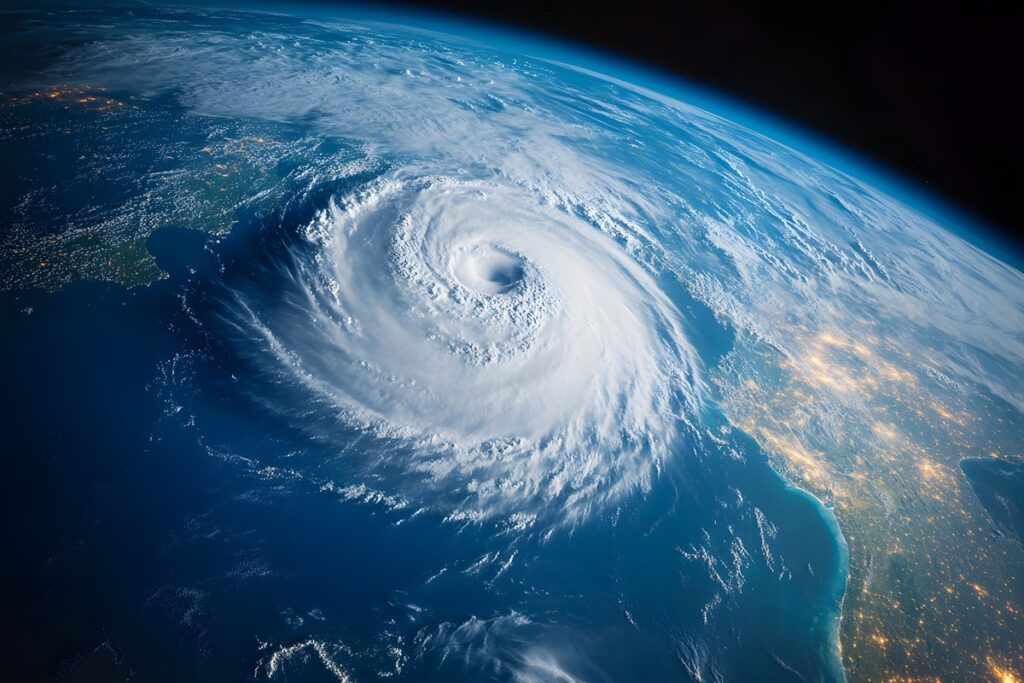According to the National Hurricane Center (NHC), Hurricane Helene, the eighth named storm of the season, made landfall as a Category 4 hurricane in Florida’s Big Bend region at approximately 11:10 p.m. EDT Friday evening, September 27, with estimated sustained winds at 140 miles per hour. Helene hit the shore in Florida, just east of the mouth of the Aucilla River, approximately 10 miles southwest of Perry, Florida.
CNN reports at least 102 casualties across six states as of Monday morning, with officials fearing the death toll may continue to rise. Many remain unaccounted for, and unable to leave their location or are unable to contact family where communication has been compromised.
There were a reported 1,833 fatalities due to Hurricane Katrina and its subsequent flooding, while Hurricane Ian, which struck southeast Florida in 2022, caused 150 direct and indirect fatalities. Helene currently ranks third on the list, having surpassed Hurricane Irma from 2017, which killed 92 in the U.S., mostly in Florida.
Impact on the Housing Market
“Hurricane Helene made landfall near Perry Florida, an area that has less robust home construction standards than south Florida, which is accustomed to large landfalling hurricanes every couple of years,” said Tom Larsen, Associate VP of Hazard and Risk Management at CoreLogic. “We expect a great deal of atypical damages in Florida’s Big Bend region due to this area’s inexperience enduring intense hurricanes.”
CoreLogic’s Hazard HQ Command Central estimates Hurricane Helene’s insured wind and storm surge losses to be between $3 billion and $5 billion, with significant uncertainty due to the wind field. Losses include damage to buildings, contents, and business interruption for residential, commercial, industrial, and agricultural property. The flood losses do not include precipitation-induced inland flooding and exclude losses to the National Flood Insurance Program (NFIP). CoreLogic’s estimate does not include damage to offshore property.
The Washington Post reports as an additional $5 billion to $8 billion in lost economic output is estimated, according to data from Moody’s Analytics.
“We anticipate the damaging effects of Helene will be deep inland with a large contribution of loss concentrated in the state of Georgia,” added Larsen. “We can look to Hurricanes Francis and Jeanne (Florida, 2004) and Superstorm Sandy (New York, 2012) as examples. These storms affected large swaths of residents with tropical storm- and hurricane-force winds and triggered widespread losses.”
Recovery and Response Efforts Well Underway
The Federal Emergency Management Agency (FEMA) is working with federal, state, tribal and local officials to coordinate and respond to the impacts of Hurricane Helene. To date, the Biden Administration granted emergency declarations for Alabama, Florida, Georgia, South Carolina, North Carolina, and Tennessee to assist these states with preparation and response efforts in the immediate aftermath of the storm. FEMA’s National Response Coordination Center in Washington, D.C. and the Regional Response Coordination Center in Atlanta are activated 24-hours to coordinate moving personnel, commodities and response assets as needed. FEMA Administrator Deanne Criswell and FEMA Region 4 Administrator Robert Samaan have been assessing damaged areas with Florida Gov. Ron DeSantis and other state officials, and to date, more than 3,200 FEMA staff and federal partners have been deployed and are assisting with Hurricane Helene response.
The U.S. Army Corps of Engineers is assessing the impact of the water systems and what is needed to bring these online in several areas across the southeast. Several counties in all states have issued boil water notices. Also, several federal agencies are moving in portable equipment to help reestablish communications in some of the hardest hit areas.
And on the heels of Helene, the NHC is issuing advisories for the Atlantic region on three incoming and developing storms, Tropical Depression Joyce, Tropical Storm Kirk, and Tropical Storm Isaac.





